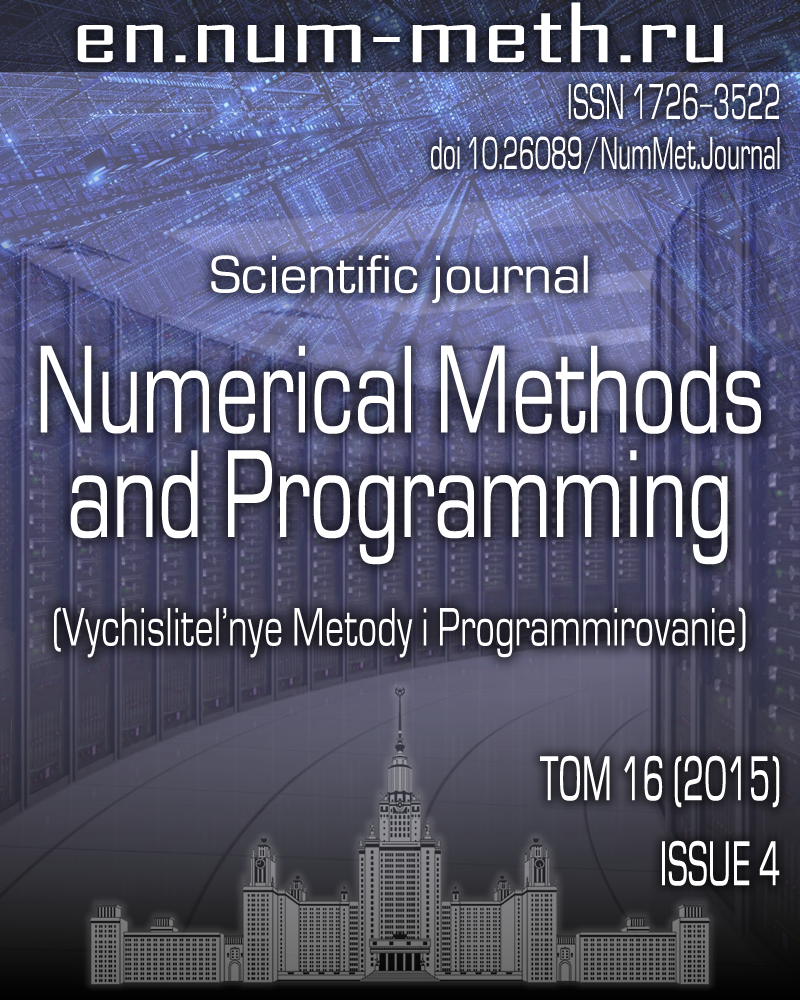DOI: https://doi.org/10.26089/NumMet.v16r457
Aspects of parallel computing to solve Helmholtz equation by a direct solver with low-rank approximation and the HSS format of data storage
Keywords:
Abstract
An algorithm for solving systems of linear algebraic equations based on the Gaussian elimination method is proposed. The algorithm is aimed to solve boundary value problems for the Helmholtz equation in 3D heterogeneous media. In order to solve linear systems raised from geophysical applications, we developed a parallel version targeted on heterogeneous high-performance computing clusters (MPP and SMP architecture). Using the low-rank approximation technique and the HSS format allows us to solve problems larger than by the use of traditional direct solvers with saving the L-factor in full rank (FR). Using the proposed approach reduces computation time; it is the key-point of 3D geophysical problems. Numerical experiments demonstrate a number of advantages of the proposed low-rank approach in comparison with direct solvers (FR-approaches).
Published
Issue
Section
References
- S. A. Solovyev, “Application of the Low-Rank Approximation Technique in the Gauss Elimination Method for Sparse Linear Systems,” Vychisl. Metody Programm. 15, 441–460 (2014).
- A. George, “Nested Dissection of a Regular Finite ElementMesh,” SIAM J. Numer. Anal. 10 (2), 345–363 (1973).
- S. Solovyev, D. Vishnevsky, and H. Liu, “Multifrontal Hierarchically Semi-Separable Solver for 3D Helmholtz Problem Using 27-Point Finite-Difference Scheme,” in Proc. 77th EAGE Conference and Exhibition, Madrid, Spain, June 1–4, 2015,
doi 10.3997/2214-4609.201413101 - S. Chandrasekaran, P. Dewilde, M. Gu, and N. Somasunderam, “On the Numerical Rank of the Off-Diagonal Blocks of Schur Complements of Discretized Elliptic PDEs,” SIAM J. Matrix Anal. Appl. 31 (5), 2261–2290 (2010).
- F. Collino and C. Tsogka, “Application of the Perfectly Matched Absorbing Layer Model to the Linear Elastodynamic Problem in Anisotropic Heterogeneous Media,” Geophysics 66 (1), 294–307 (2001).
- J. Xia, “Robust and Efficient Multifrontal Solver for Large Discretized PDEs,” in High-Performance Scientific Computing (London, Springer, 2012), pp. 199–217.
- S. A. Solovyev and S. Tordeux, “An Efficient Truncated SVD ofLarge Matrices Based on the Low-Rank Approximation for Inverse Geophysical Problems,” Siberian Electronic Math. Rep. 12, 592–609 (2015).
- B. Glinsky, I. Chernykh, N. Kuchin, et al., “Control and Managing the HPC Cluster in Siberian Supercomputer Center,” in Proc. Int. Conf. Russian Supercomputing Days, Moscow, Russia, September 28–29, 2015 (Mosk. Gos. Univ., Moscow, 2015), pp. 667–675.


